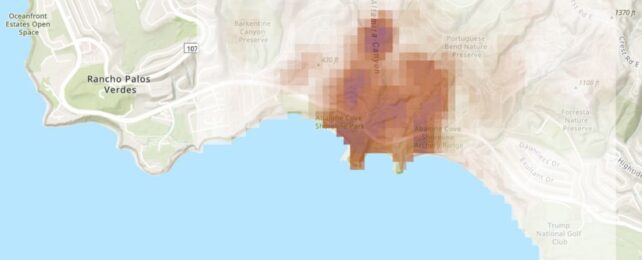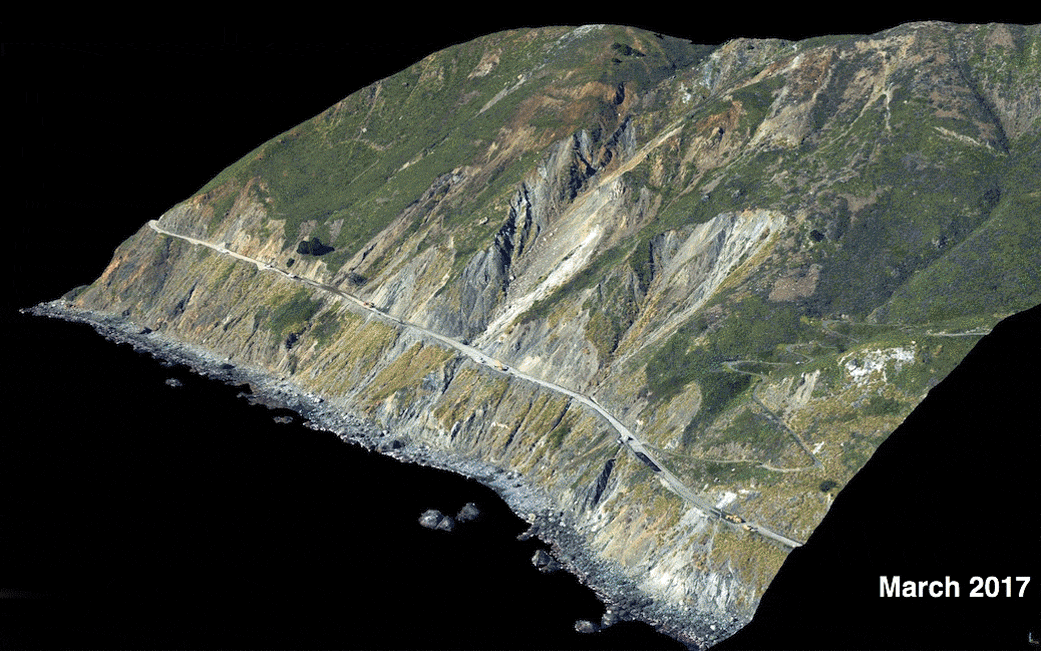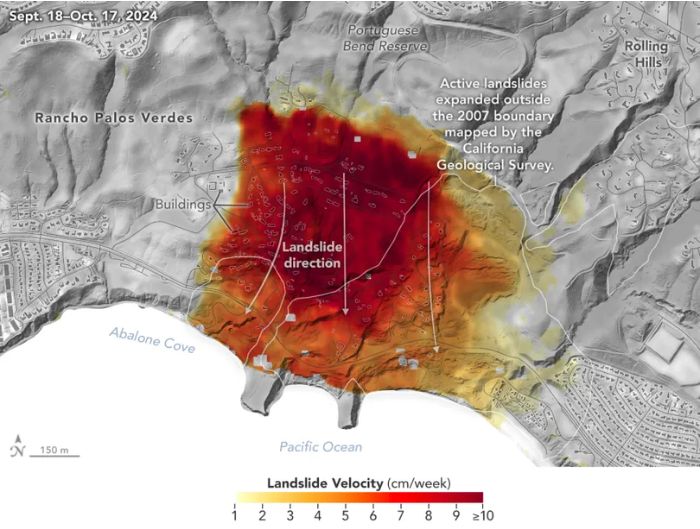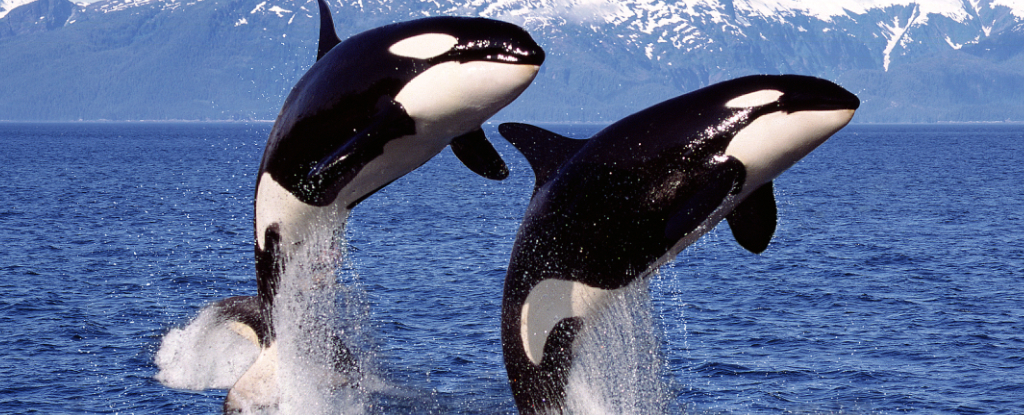ARTICLE AD
 The area on the move, as recorded by ARIA Sentinel 1 satellite in October 2024. (NASA)
The area on the move, as recorded by ARIA Sentinel 1 satellite in October 2024. (NASA)
As if Los Angeles doesn't have enough to contend with in the aftermath of its catastrophic fires, NASA is now warning slow landslides are accelerating to threaten hundreds of buildings on the Palos Verdes Peninsula.
While the threat hopefully isn't immediate, such unstable land can suddenly collapse, as with the Mud Creek landslide in 2017, so researchers are trying to better understand the warning signs.
 The 2017 Mud Creek landslide along the Big Sur coast, and subsequent repairs to the highway that was damaged during the event. (Andy Ritchie/USGS Pacific Coastal and Marine Science Center)
The 2017 Mud Creek landslide along the Big Sur coast, and subsequent repairs to the highway that was damaged during the event. (Andy Ritchie/USGS Pacific Coastal and Marine Science Center)This region on the Palos Verdes Peninsula has been slowly slipping towards the ocean for decades, but new radar data from NASA's Jet Propulsion Laboratory (JLP) has found the rate of this ocean-bound slide has increased.
The area of land on the move has also expanded substantially since California's Geological Survey mapped out the at-risk boundaries in 2007, now encompassing many more buildings.
 Visualization of the radar data of Palos Verdes landslide areas and velocity, with white lines indicating the 2007 landslide boundaries. (NASA Earth Observatory)
Visualization of the radar data of Palos Verdes landslide areas and velocity, with white lines indicating the 2007 landslide boundaries. (NASA Earth Observatory)"We're seeing that the footprint of land experiencing significant impacts has expanded, and the speed is more than enough to put human life and infrastructure at risk," JLP's geoscientist Alexander Handwerger warns.
Radar measures and data from the European Space Agency's Copernicus satellite indicate that during Autumn of 2024 residential land was moving as much as 10 centimeters (4 inches) per week towards the Pacific Ocean.
This increase in motion followed record-breaking rainfall in 2023 along with further heavy downpours in early 2024.
"The large majority of landslides around the world are triggered by intense or prolonged rainfall," NASA physical scientist Dalia Kirschbaum explains on YouTube.
frameborder="0″ allow="accelerometer; autoplay; clipboard-write; encrypted-media; gyroscope; picture-in-picture; web-share" referrerpolicy="strict-origin-when-cross-origin" allowfullscreen="allowfullscreen">
Just as they have worsened fire conditions, warming global temperatures have also increased these extra strong deluges of rain, making landslides yet another threat exacerbated by human-caused climate change.
As the atmosphere warms, its capacity to hold water increases, leading to more extreme rain events as well as more severe dryness when it's not raining. This dramatic speed-up of the water cycle is creating a phenomenon called hydroclimate whiplash where conditions jerk rapidly from extremely wet to extremely dry and back again.
In 2022, Handwerger and colleagues were surprised to discover that landslides move faster during rainy seasons than dry seasons, regardless of whether the soil is dry or already wet.
Handwerger plans to continue investigating these risks by studying how hydroclimate whiplash will influence the earth's movement.
A better understanding of these interactions could inform monitoring networks that provide alerts to state officials and communities.

 3 hours ago
4
3 hours ago
4 

